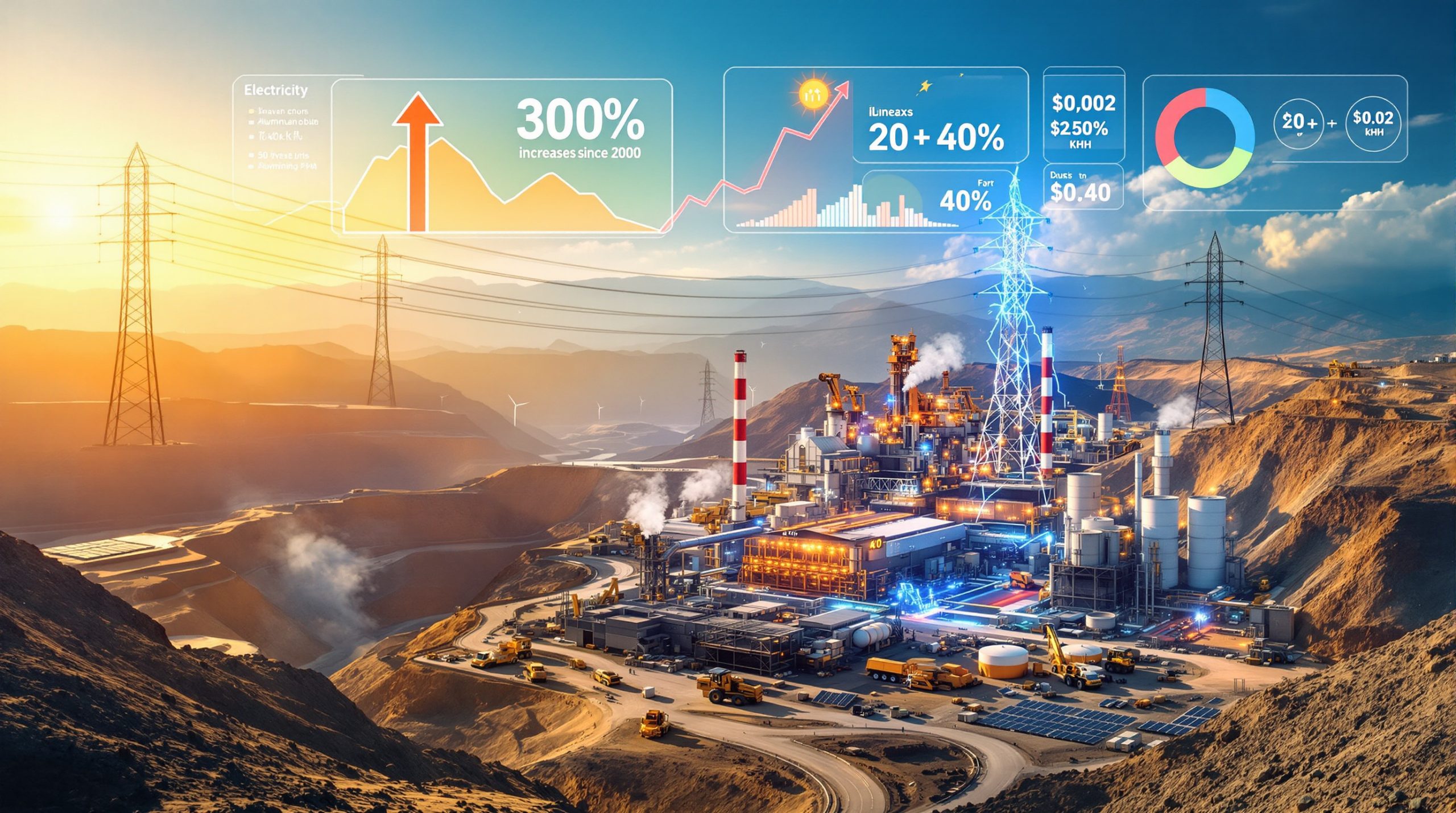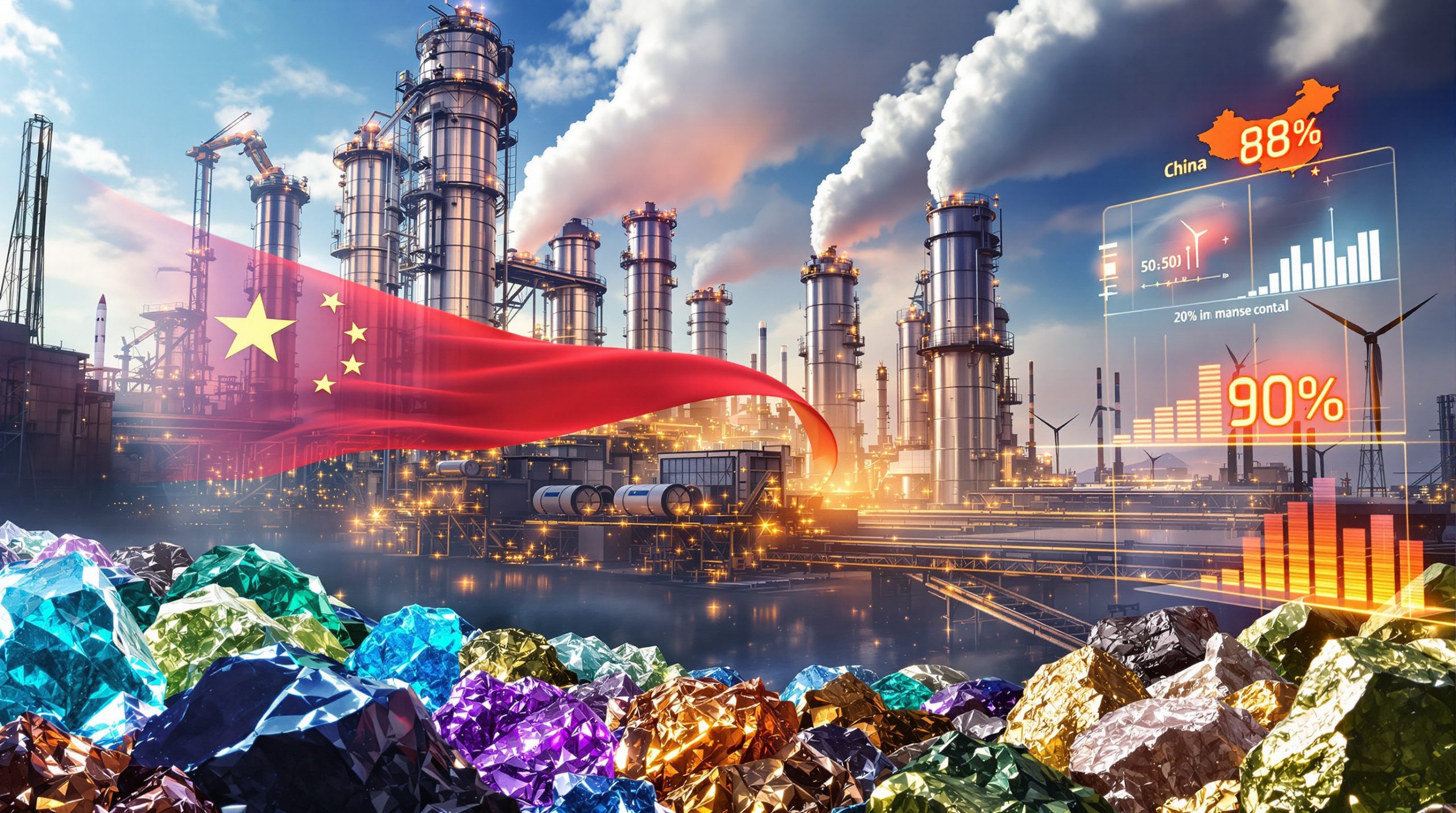What Makes Copper and Lithium Essential Investment Targets?
Copper and lithium have emerged as cornerstone investments for those looking to capitalize on the global transition to clean energy and advanced technology. These critical minerals serve as the foundation for electrification, renewable energy infrastructure, and technological advancement in today's rapidly evolving economy.
The demand for these minerals continues to accelerate as governments worldwide commit to net-zero emissions targets and companies invest heavily in sustainable technologies. This isn't just a short-term trend—it represents a fundamental shift in global industrial development that could last decades.
The Dual Pillars of the Electrification Economy
Copper and lithium each play distinct yet complementary roles in the modern economy, creating what industry experts call the "backbone of infrastructure" powering everything from electric vehicles to data centers.
Copper functions as the essential conductor for electricity transmission across virtually all sectors. Its unmatched conductivity makes it irreplaceable in electrical applications, from power generation to transmission and distribution networks.
Lithium serves as the critical component in energy storage technologies, particularly lithium-ion batteries. These batteries power everything from smartphones to electric vehicles and grid storage systems.
As Baya from KfW IPEX-Bank notes, "Copper is a well-diversified metal which you need in all kinds of industries… the future demand of copper will be mainly driven by the energy transition." This statement underscores the strategic importance of these materials in the global push toward sustainable energy systems.
Why Is Copper Considered the Metal of the Future?
Copper has earned its reputation as "the metal of the future" due to its indispensable role in the clean energy transition and its growing supply-demand imbalance. While often overshadowed by more headline-grabbing materials like lithium and rare earth elements, copper price insights show its position as a foundational metal for electrification makes it particularly strategic.
The Fundamental Supply-Demand Imbalance
The copper market faces a significant structural challenge that creates a compelling investment opportunity:
- Global copper prices have remained relatively stable between $3.50-4.50/lb for nearly 15 years
- This price stability has discouraged major investments in new copper projects
- Mining companies have been reluctant to develop new deposits during this extended period of flat prices
- Production capacity has consequently not kept pace with accelerating demand
Jay, CEO of Camino Copper, emphasizes this point: "We just see that there's been a lack of investment for the last 15 years in the copper space." This underinvestment cycle has created conditions for a potential supply crunch as demand accelerates.
How Electrification Is Transforming Copper Demand
The demand profile for copper is evolving rapidly due to several key technological and infrastructure shifts:
- Electric vehicles require approximately 160 pounds of copper per unit—four times more than traditional combustion vehicles
- Renewable energy infrastructure is copper-intensive, with solar and wind installations requiring substantial copper for transmission and distribution
- Data centers and AI infrastructure create new demand streams, with copper essential for server farms and networking equipment
- Smart grid modernization efforts worldwide require significant copper for upgrading aging electrical infrastructure
These trends are already visible in corporate purchasing patterns. As Jay from Camino Copper points out, "China Grid, the world's largest company by revenue, has been significantly increasing copper purchases" to modernize and expand electrical infrastructure. Similarly, Florida Power Company (among the largest U.S. utilities) is investing heavily in grid infrastructure upgrades that require substantial copper inputs.
According to Baya from KfW IPEX-Bank, "Copper is not only in energy transition… it's also used for data centers, AI." This diversification of demand sources strengthens copper's investment case beyond any single industry trend.
Where Are the World's Strategic Copper Resources Located?
The global distribution of copper resources is highly concentrated in specific geological regions, creating both opportunities and risks for investors. Understanding where these resources are located provides crucial context for evaluating mining investments and supply chain security.
The Geological Concentration of Copper Deposits
Copper production is highly concentrated geographically due to geological factors:
- Chile: World's largest producer with the most significant copper endowment by far
- Peru: Second largest producer with similar geology to Chile but significantly less explored
- Democratic Republic of Congo (DRC): Competing with Peru for second position, with substantial high-grade resources
These three jurisdictions account for over 50% of global copper production. Jay from Camino Copper highlights this concentration: "The largest endowment of copper in the world by multiples is in Chile… the US imports over 70% of its copper from one country: Chile." This dependency creates both supply chain vulnerabilities and investment opportunities in these regions.
How Are Junior Mining Companies Positioning for the Copper Boom?
Junior mining companies are strategically targeting copper-rich regions with projects at various development stages:
- Chile: Focus on projects with existing environmental permits ready for construction
- Peru: Exploration of underexplored regions with similar geology to Chile
- Strategic partnerships: Collaborations with established mining companies to accelerate development
Camino Copper exemplifies this approach with projects in both Chile (permitted and ready to build) and Peru (exploration with partners like Nippon Mining). These companies aim to capitalize on the anticipated copper supply gap by advancing projects toward production ahead of market tightening.
The concentration of resources in specific jurisdictions also highlights the importance of geopolitical considerations when evaluating copper investments. As global tensions rise, secure access to copper resources becomes increasingly strategic for both companies and nations.
What Makes Lithium a Strategic Investment Target?
Lithium has transformed from a niche investment to a strategic mineral at the center of the global energy transition. Its essential role in battery technology makes it a critical component of electric vehicles, renewable energy storage, and portable electronics.
The Evolution of the Lithium Market
The lithium sector has transformed dramatically over the past decade, illustrating how critical minerals can move from obscurity to strategic necessity:
- Early investors faced significant skepticism about lithium battery adoption (2009-2010)
- Market awareness grew as lithium-ion batteries decisively replaced nickel-metal hydride technology
- Premium projects like the Thacker Pass project (US) and Cauchari (Argentina) became highly sought after
- Major automotive manufacturers began direct investment in lithium projects
This evolution demonstrates how critical minerals can rapidly shift from niche investment to mainstream strategic assets as technologies mature and industries adapt. Howard Klein of RockTalk Channel notes how major automakers like GM have invested directly in lithium projects, signaling the strategic importance of securing supply chains.
The lithium market insights have shown much greater price volatility than copper, with dramatic increases followed by corrections. This reflects lithium's emergence as a critical mineral with rapidly evolving market dynamics compared to copper's established industrial base.
How Is Potash Emerging as Another Critical Mineral?
While copper and lithium dominate discussions about critical minerals, potash has emerged as another strategically important resource that's gaining investor attention. Its direct connection to food security and concentrated production in geopolitically sensitive regions makes it particularly interesting.
The Geopolitical Importance of Potash
Potash has several characteristics that elevate its strategic importance:
- Food security connection: Potash is essential for agricultural productivity and fertilizer production
- Supply concentration: 35% of global potash comes from Russia and Belarus
- Geopolitical risk: This concentration creates vulnerability in global food systems
- Critical mineral designation: Recently added to critical minerals lists in Canada and the European Union
Farhad, CEO of Millennial Potash, emphasizes this point: "Potash is becoming geopolitically hot… it is directly linked to food security." This direct connection to food production makes potash fundamentally different from metals tied to industrial applications.
The Russia-Ukraine conflict has highlighted vulnerabilities in global potash supply chains. As Farhad notes, "The US government is taking a lot more active stance in terms of actually securing different minerals including potash." This geopolitical awareness is driving interest in potash projects in politically stable jurisdictions.
Projects with advantages in infrastructure access and mining methodology can be particularly attractive. For example, Millennial Potash's project in Gabon features a thick deposit (70-80m, with one drill hole showing 290m), solution mining technology that minimizes environmental impact, and coastal infrastructure providing access to global markets.
How Are Governments Responding to Critical Mineral Challenges?
Governments worldwide are implementing unprecedented policies to secure critical mineral supply chains. This shift represents a fundamental change from previous hands-off approaches to more direct government involvement in mineral development.
The Shift in Government Approaches to Mineral Security
National and regional governments are taking active roles in critical minerals development:
- U.S. initiatives: Mining permitting policies through executive orders to accelerate permitting, critical minerals lists, and funding through US EXIM Bank
- European Union: Creation of critical minerals legislation and strategic project designations
- International partnerships: Increased cooperation between Western nations to counter Chinese dominance
- Development financing: Government-backed institutions providing funding for strategic mineral projects
Baya from KfW IPEX-Bank highlights this change: "The European Union now has realized how important it is to have a diversified supply of critical minerals." This recognition has translated into concrete policy actions aimed at securing supply chains.
These government initiatives create significant opportunities for mining projects in strategically important jurisdictions. US EXIM Bank is now investing in Canadian projects, while European development finance institutions are funding mining operations that support energy transition goals.
As Tate Sullivan from Maxim Group notes, the accelerated permitting processes being implemented in some jurisdictions could significantly reduce development timelines for critical mineral projects. This government support can substantially de-risk projects for investors by reducing regulatory hurdles.
What Financing Options Are Available for Critical Mineral Projects?
The financing landscape for critical mineral projects is diversifying rapidly, moving beyond traditional mining finance models to include new sources of capital with strategic interests in securing supply chains.
The Evolving Landscape of Mining Finance
The financing options for critical mineral projects now include:
- Traditional Canadian capital markets: Still important but no longer the only significant option
- Development Finance Institutions (DFIs): Increasing role in project financing for energy transition minerals
- International investors: Family offices from Singapore, Dubai, and other global financial centers
- Strategic industry partners: End-users like automotive manufacturers investing directly
- Government-backed financing: Export credit agencies and development banks
Farhad from Millennial Potash notes that "70-80% of capital for junior miners now comes from outside Canada," representing a significant shift from historical patterns. Millennial Potash itself has raised capital from family offices in Singapore and Dubai, as well as U.S. private funds.
Baya explains how KfW IPEX-Bank (a German government-owned DFI) is actively funding mining projects that support energy transition goals. These DFIs provide debt with a mandate to support strategic sectors, often offering more favorable terms than commercial lenders.
This diversification provides more options for project developers, particularly those in jurisdictions considered strategic for supply chain security. Projects with clear connections to energy transition or food security can access capital that might be unavailable to conventional mining ventures.
What Role Are Corporate End-Users Playing in Mineral Development?
A notable trend in critical minerals is the increasing direct involvement of end-users in securing their supply chains. This vertical integration represents a significant shift in how supply chains are structured and financed.
The Emergence of Vertical Integration Strategies
End-users across multiple sectors are taking proactive steps to secure mineral supplies:
- Automotive manufacturers: Companies like GM investing directly in lithium projects
- Technology companies: Meta and other tech giants securing energy supplies for data centers
- Potential expansion: Speculation about hyperscalers (Amazon, Google, Microsoft) potentially investing in copper projects
Howard Klein highlights GM's equity investment in Lithium Americas' Thacker Pass project as an example of this trend. Similarly, Meta has established offtake agreements with Constellation Energy for nuclear power to ensure stable energy for its data centers.
This vertical integration serves multiple purposes:
- Securing physical supply of critical materials
- Hedging against price volatility
- Supporting ESG goals through influence over production practices
- Creating competitive advantages through supply chain security
For mining companies, these strategic partnerships can provide not only capital but also credibility and secure offtake agreements that significantly de-risk projects. This trend potentially provides new funding sources for mining development beyond traditional investors.
How Is Investment Capital Flowing Into the Mining Sector?
The sources of capital for mining projects are evolving significantly, with geographical shifts and new investor types entering the sector. Understanding these capital flows is essential for companies seeking funding and investors analyzing the competitive landscape.
The Geographic Shift in Mining Investment
The traditional dominance of Canadian mining finance is being challenged by international capital sources:
- Traditional Canadian mining finance: Experiencing challenges with domestic projects and regulatory complexity
- International capital: Increasingly important, especially for projects in developing nations
- Jurisdictional advantages: Projects in strategic locations attracting diverse capital sources
- Specialized investors: Family offices and private equity focusing specifically on critical minerals
Farhad from Millennial Potash emphasizes this shift: "For many junior mining companies, 70-80% of capital is now coming from outside Canada." This represents a significant departure from historical patterns where Toronto-based financing dominated the junior mining sector.
International investors, particularly family offices from Singapore, Dubai, and other global financial centers, are increasingly interested in critical minerals. These investors often have longer time horizons and strategic objectives that align well with mining development timelines.
Projects in jurisdictions considered strategic for supply chain security can attract capital that might be unavailable to projects in less favorable locations. This creates a competitive advantage for companies with assets in these regions.
What Are the Key Investment Criteria for Critical Mineral Projects?
Successful critical mineral investments require consideration of multiple factors beyond just geology. Understanding these criteria helps investors evaluate opportunities and companies position their projects effectively.
Evaluating Project Potential Beyond Geology
Industry experts highlight several key factors that determine project success:
- Geological advantage: Grade, thickness, and extraction potential
- Infrastructure access: Proximity to transportation, energy, and water
- Jurisdictional risk: Permitting timelines and political stability
- Cost structure: Competitive position on the global cost curve
- Management track record: Previous success in creating shareholder value
These factors interact in complex ways. For example, a high-grade project in a difficult jurisdiction might face longer development timelines than a lower-grade project in a mining-friendly region. As noted in the panel discussion, even high-grade lithium projects in Chile have faced water permit delays of 10-15 years, while lower-grade projects in Argentina could advance more quickly.
Mining methodology can significantly impact both environmental footprint and cost structure. Farhad highlights how solution mining for potash offers lower costs and reduced environmental impact compared to traditional methods, potentially accelerating permitting and improving economics.
Projects combining technical excellence with strategic advantages in these areas represent the most compelling investment opportunities. Companies that can clearly articulate their advantages across these dimensions typically attract more investor interest and strategic partnerships.
What Does the Future Hold for Critical Mineral Investments?
The critical minerals sector is poised for significant changes as global awareness grows about the strategic importance of these resources. Several trends are likely to shape investment opportunities in the coming years.
Anticipating Market Evolution and Investment Opportunities
Key trends to watch in the critical minerals space include:
- Rotational investment patterns: Potential for capital to rotate back into metals as awareness grows about supply constraints
- Increased institutional interest: More dedicated mining funds emerging in North America
- Strategic importance recognition: Growing understanding of critical minerals' role in technology and national security
- Government policy support: Continued development of supportive regulatory frameworks
- Supply chain restructuring: Movement toward more diversified and secure supply networks
Tate Sullivan from Maxim Group highlights increased institutional interest through dedicated mining funds in North America. This suggests growing mainstream recognition of the investment opportunity in critical minerals.
Companies developing multiple critical minerals in stable jurisdictions may be particularly well-positioned. Tate Sullivan mentions NioCorp (NB) as an example, developing several critical minerals in Nebraska with potential policy support.
The recognition of supply chain vulnerabilities continues to drive both government and corporate action. As Baya notes, "The European Union now has realized how important it is to have a diversified supply of critical minerals." This awareness will likely translate into continued policy support and investment in the sector.
These trends suggest a potentially favorable environment for strategic investments in copper, lithium, and other critical minerals essential to technological advancement and energy transformation. Furthermore, mining finance trends indicate that companies that can effectively position their projects within this strategic framework may attract premium valuations and partnership opportunities.
FAQ: Investing in Copper and Lithium
How do copper and lithium prices compare in terms of historical volatility?
Copper prices have shown remarkable stability, trading between $3.50-4.50/lb for nearly 15 years, while lithium has experienced much greater price volatility with dramatic increases and subsequent corrections. This difference reflects copper's established industrial base versus lithium's emerging market dynamics and the rapid evolution of battery technology standards.
What are the primary demand drivers for copper in the coming decade?
The primary demand drivers include electric vehicle production (requiring 4x more copper than conventional vehicles at approximately 160 pounds per unit), renewable energy infrastructure, data center expansion, AI computing infrastructure, and global grid modernization projects. According
Looking to Capitalise on the Next Major Mineral Discovery?
Stay ahead of the market with Discovery Alert's proprietary Discovery IQ model, which delivers real-time notifications on significant ASX mineral discoveries across copper, lithium and other critical minerals. Visit our dedicated discoveries page to understand how major mineral discoveries can lead to substantial returns and begin your 30-day free trial today.




